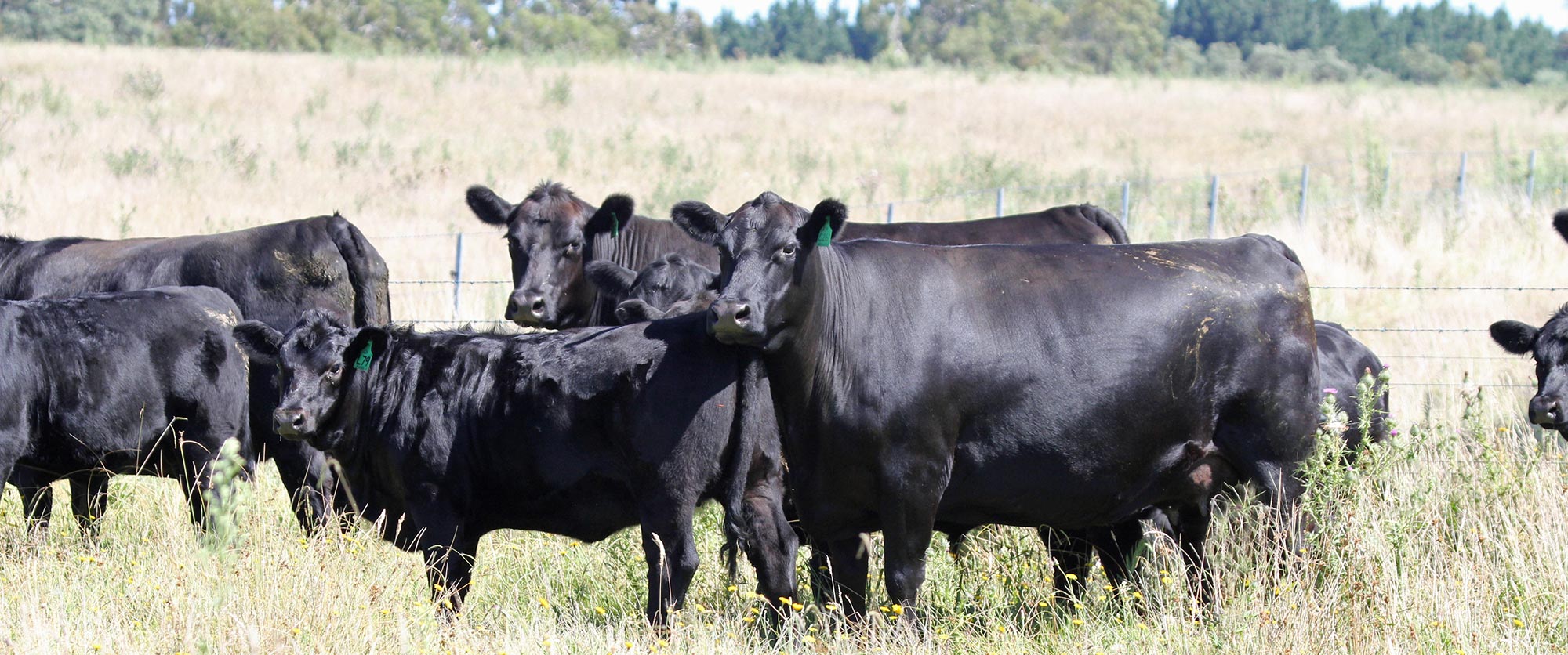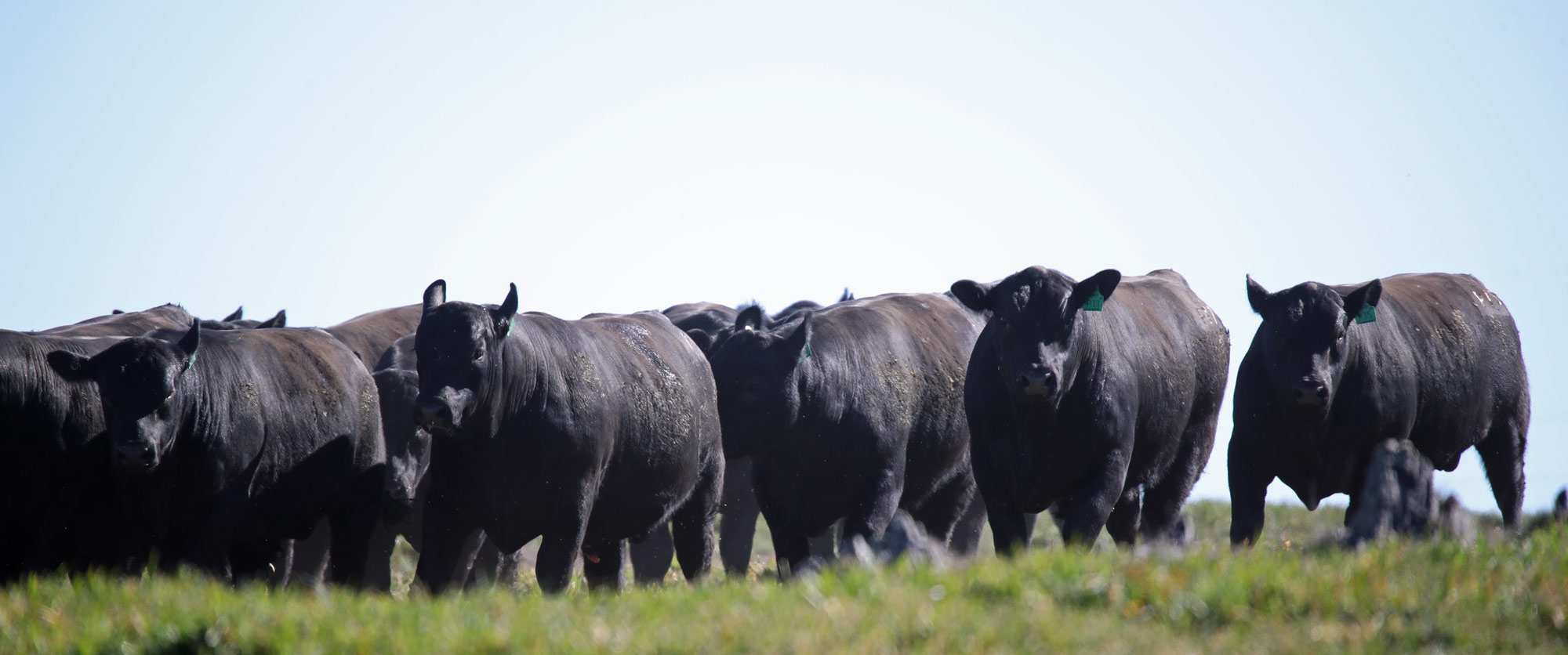Why Early Weaning is a good idea?
Whilst milk is an excellent source of nutrition and immunity for the newborn animal it becomes an increasingly inefficient way to meet the nutritional requirements for growth. The process of a cow or ewe converting feed into milk and the progeny then converting milk into meat and other products for growth is not as efficient as providing each with their own specific requirements.
Therefore the total amount of feed required to maintain both animals is dramatically reduced once they are separated. This has long been recognized as a valuable tool in drought management to reduce the total feed requirement, however the same benefits can be gained in normal seasons if early weaning becomes an integral part of the normal management. The longer the interval between calving and weaning, the greater the consumption of high value pasture.
The significant reduction in overall feed requirement following early weaning creates a relative feed surplus or the potential to increase carrying capacity.
Fertility responses to early weaning reflect the influence of energy balance and condition score on the reproductive responses of the breeding unit. There is also significant evidence to show that removal of a suckling calf cause hormonal changes in the cow that stimulate cycling. Trial work at Oklahoma State University showed that heifers had their first cycle 20% earlier when their calves were early weaned compared to those with calves weaned at the normal age. Cows whose calves were early weaned cycled 43% earlier. Pregnancy rates were 39% higher in heifers, and 17% higher in cows with early weaned calves.
Fundamentals for Successful Weaning
Post weaning growth rates and feed conversion efficiency in weaned animals are fundamentally determined by both the bodyweight and level of rumen development achieved by the calf at the point of weaning. Bodyweight is important because it determines feed intake and therefore potential growth, in practice however, once calves achieve a bodyweight of 140- 160 kg they are able to consume sufficient high quality pasture to maintain excellent weight gains.
Rumen development is important in determining both short and long term growth rate performance and future feed conversion efficiency.
Efficiency of Nutrient Uptake & Distribution
Other than having access to a supply of feedstuffs which promote a continuing and stable fermentation process, fully functional ruminants also rely heavily on the efficiency with which Volatile Fatty Acids are both absorbed and distributed from the rumen.
To this extent, the efficiency of conversion of feed to meat, wool, milk or new progeny in cattle is conditional on the level of development of both the rumen epithelium and the richness of the surrounding blood supply.
Young animals that suffer from a lack of development of the epithelium, and in particular poor formation of papillae (the small protrusions that increase the efficient absorption of nutrients in the rumen), are at a significant risk of reduced growth rates and poor vigor in the post weaning period.
Under these circumstances the genetic potential for feed conversion efficiency, weight gain and adult size are often compromised.
Key Factors In Rumen Development
Extensive work by Professor D.C. Church Ph.D. of Oregon State University has shown that exposure to diets containing both roughage and quality carbohydrate early in it’s life significantly advances the development of both the rumen epithelium & the associated blood supply.
Ruminants fed these types of diets at weaning also begin exhibiting the rumen muscle contractions required to stir rumen contents for more efficient digestion at an earlier age.
Calves exposed to “milk only” diets on the other hand show retarded development of the rumen epithelium, reduced rumen blood supply and may go for extended periods without exhibiting rumen muscle contractions.
Importantly, advanced rumen physiological development is shown to significantly reduce potential weaning age and it has also been shown to have a very positive influence on increasing post weaning growth, development and Feed Conversion Efficiency.
Providing weaners with access to a high quality source of roughage throughout the weaning process is important to increasing the volume of the rumen as a percentage of the upper gastro-intestinal tract.
Providing weaners with a high quality cereal grain for a period through the weaning process is critical to rumen epithelial & vascular development. (Quantity of grain depends on grain type, feeding frequency and bodyweight)
Traditional weaning practices are mismatched with the need for increased production efficiency because they inherently reduce rather than enhance the genetic potential for growth and feed conversion efficiency in developing progeny.
Unfortunately, current weaning management systems disregard much of our fundamental technical understanding of the nutritional factors influencing physiological development in the young calf. At best, producers who continue to wean as they have always done run the risk of limiting their return on investment from high performance genetics.
At worst they contribute to the perpetuation of low efficiency animal production systems. Like many animal production management issues weaning should not be viewed in isolation, but rather as part of a continuum of good production and nutritional management.
To that end, good weaning starts with correct pre- calving preparation of the cow, using simple techniques designed to increase early lactational performance. This underpins rapid growth in the newborn calf, in turn producing greater bodyweights at an earlier age.
Higher bodyweights at an earlier age coupled with the correct pre-weaning and weaning management system significantly enhance the opportunity to increase rumen physiological development, minimise stress and in turn
prepare the calf for high post weaning growth.
What is involved?
There are a number of simple management and nutritional techniques to be employed in this process. A full protocol is available to explain in detail the following steps.
Imprinting
Previous exposure to hay, pellets and grain is very beneficial in the training of behaviour which improves uptake during the weaning process.
Stress Management
This will help to quieten cattle and stimulate appetite.
A pelleted supplement can be fed or a liquid supplement provided on hay for the first two days.
Vaccination and Injections
A complete protocol for vaccination, drenching, vitamin and trace element supplementation needs be developed for your location.
Introduction of Weaner pellet
A weaning pellet specifically designed for this program can be gradually introduced and fed with a small amount of cereal grain.
Yard Feeding
The aim of this period of feeding is for both stimulation of maximum rumen development and for bunk training.
The recommended period for feeding of weaning pellet and grain is usually about 21 days. The age of the calves is a factor, with younger calves benefiting from a longer feeding period.
A Complete Ration
The rest of the animals diet will depend on the situation. Hay should also be provided and a protein supplement may be needed depending on the hay type and pasture available. Good quality water is also essential.
For further information or to enquire about workshops to be conducted in your area please contact:
Rick White
Director Technical Services
Livestock Central
Mob 0427 733713
Email ricwhite@bigpond.net.au





